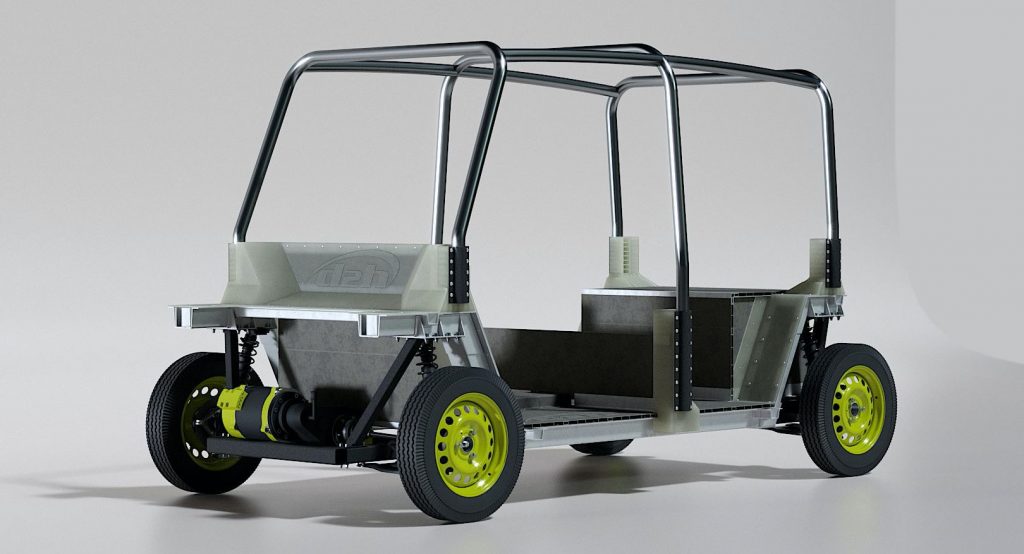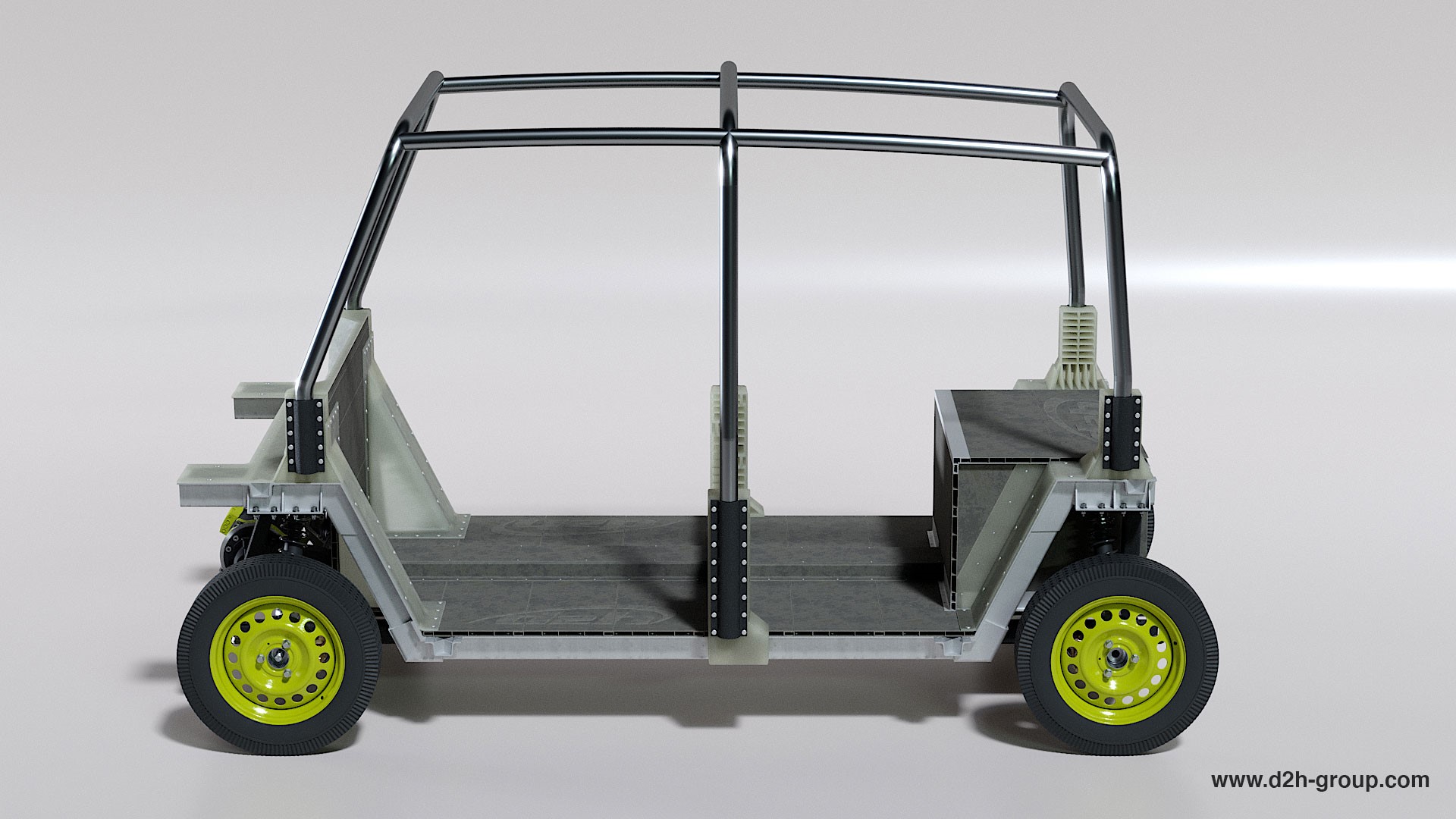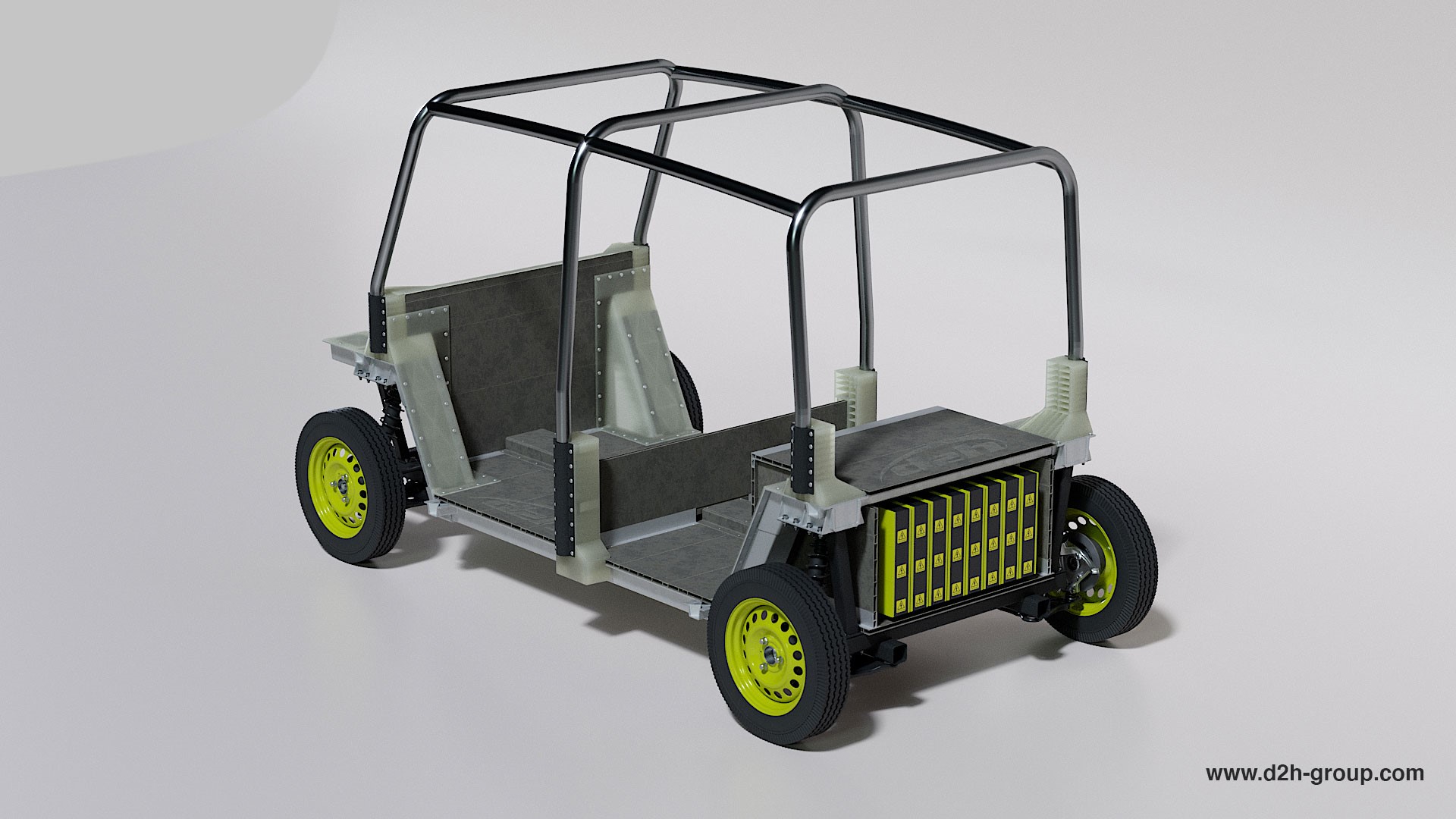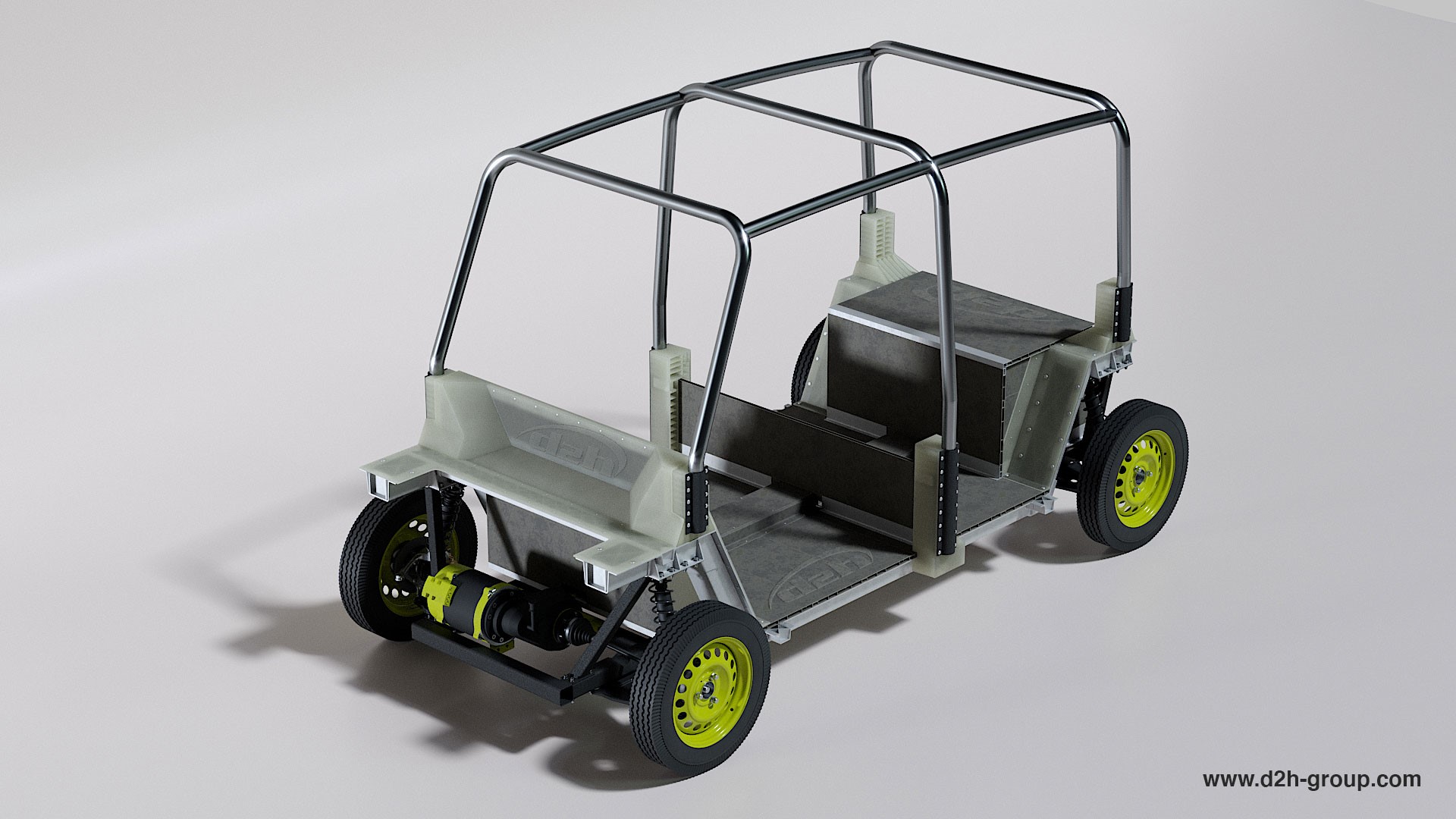The Tuk-Tuk three-wheeled utility vehicle is an immensely popular vehicle in India and southeast Asia.
It sells by the millions each year so developing a credible successor would be a very lucrative business. UK-based engineering company D2H wants to do just that, namely launch an environmentally-compatible alternative to the aged Tuk-Tuk. D2H is leading a consortium to design an innovative, low-cost electric vehicle chassis that has the potential to replace the Tuk-Tuk.
The design meets the L7E Heavy Quadricycle EU classification, which means it’s currently exempt from crash test assessment. Still, D2H says the LCEV chassis has been designed to raise the bar for safety performance in its price segment.
Watch: Living With A Tuk-Tuk Looks Strangely Enjoyable
In its present form, the electric utility vehicle uses proprietary suspension, brakes and steering from a current production chassis, with front-wheel drive from a front-mounted motor and battery packs stored in between the rear wheels.
The design weight is 480 kg (1,058 lbs), excluding the batteries. “While we are designing for a low voltage powertrain, we have no specific solution in mind at this stage,” says Matthew Hicks, D2H Engineering Director. “However, we envisage power and cooling sufficient for 12 hours continuous use – these are utility vehicles and need to be kept in service for long periods”, he adds.
Consortium partner Coventive Composites has developed a jute-based natural fiber thermoplastic polymer for the panels fitted to the predominantly bonded chassis. The material has been chosen because jute is readily available in the target markets while also being lightweight and relatively strong.
Furthermore, fiber reinforced thermoplastics have reduced manufacturing cycle times and energy requirements. They also allow high levels of detail to be molded in and typically require less post processing. The idea is for the chassis to be built locally to the market it is intended for, enabling the LCEV to compete directly with Tuk-Tuk. Currently, D2H plans to move to the prototype and testing stage with the help of further partners.
“The development of the vehicle will require like-minded powertrain and battery providers, who can provide robust and very low-cost alternatives to petrol combustion units,” Hicks explains.
In addition to D2H and Coventive Composites, the consortium also includes Warwick Manufacturing Group (WMG). The project has secured funding assistance from Innovate UK’s IDP15 scheme.







